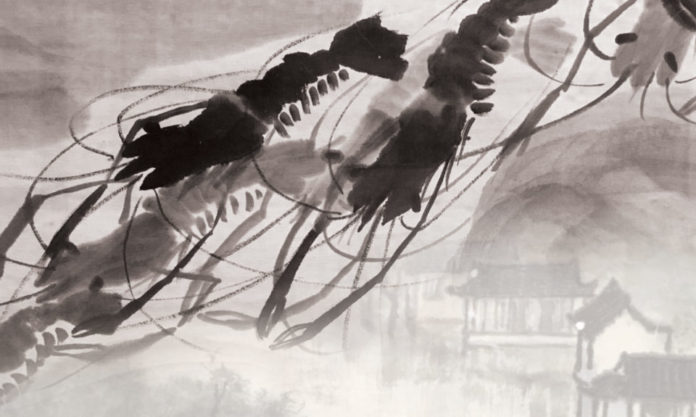As the thermals come out and the season of sleeping bag jackets sets in, it calls for indoor activities. A small but highly accessible exhibition at the Nanjing Museum should fit the bill nicely. “Lofty Sublimity” (don’t judge by the name) shows the work of eight Chinese painters, whose distinctive styles reflect the radical changes of the 20th century in which they lived. For lack of English signage, this month’s outing of “For Art’s Sake” may enrich a visit on a cold wintry day.
On your left as you walk in are the paintings of Qi Baishi, the master of prawns, cabbages and all things ordinary. Such simple subject matter is certainly the result of his upbringing in the country, while its neutrality allowed him to bypass the political scrutiny to which some other artists were subject. Qi is a universal crowd pleaser who expertly captures the vibrancy of his subjects in but a few confident strokes.
From nature up close to nature from afar, next up is Huang Binghong, whose style is described as “black, dense, thick and heavy”. Looking up at the paintings, it is just that. The volume and texture of his mountains are achieved through layers of dry and wet brushwork. Clouds and streams are left white, offering much-needed breathing space and channels through which to navigate each landscape.
- A Royal Success; The Largest Exhibition of Chinese Art Ever
- When Art History Goes into the Washing Machine
- China Design Icons 101; A Lowdown on Chinese Logos
To the right, the works of Xu Beihong are fleshy, assured and unmistakably influenced by his training in western painting. One long hanging scroll on the back wall is almost creepy in its ultra realistic rendering of faces. It depicts a scene from the World Peace Conference in Prague, which Xu attended in 1949.
Like Xu, Zhang Daqian’s time abroad had a profound impact on his artistic career. Perhaps one of the most skilled masters of traditional techniques, his work became increasingly abstract in old age as his eyesight began to fail. What may have been lost in sight, however, was retained in muscle memory. His petrol blue and green landscapes, one of which is on display, remain among his most evocative works.
Behind is a room of Pan Tianshou’s enormous paintings, so big so that one cannot help but imagine the artist clambering across great sheets of paper as he worked. Two menacing vultures perched upon a jagged rock are described by little more than blotches of ink, but have a forceful sense of character.
- In Perspective; Sifang Art Museum
- Good Coppers; Nanjing’s Best Bronzes
- Five Steps to Fudging with Finesse
Then there is Lin Fengmian, who spent his early career in Europe and later returned to China to found what is now the China Academy of Art. Every painting on display is square, a composition that he believed was more in keeping with modern taste. His elite background, however, did not bode well on his career and swathes of his works were destroyed, some of which he tried to recreate in later life.
Second to last is Fu Baoshi, who formally taught art at the Central University in Nanjing. With a background in art history, he was well versed in traditional painting techniques, but that didn’t stop him from innovating. His ability to capture rain in its many states is evident in the hanging scrolls on display.
Finally to Li Keran, whose painted scenes of southern China have a strong appeal even today. His use of wet brushwork lends a certain softness, while his unconventional use of intense colour, such as the bright red landscape set his work apart from his peers.
Lofty Sublimity runs until 28 February at the Nanjing Museum. Tickets are priced ¥50; students ¥30.









